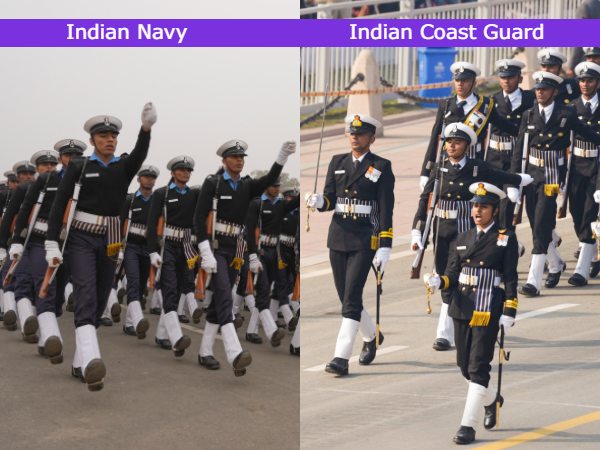Many people, including aspiring students, believe that the Indian Navy and Coast Guard operate similarly, but this is not the case. There are a few notable differences between the two branches of our nation's armed services. You will be able to clearly distinguish the functions of both of our forces after reading this article.
Let's know what the Indian Navy and Indian Coast Guard are:
Both the coast guard and the navy of India are government-run organisations. Both have particular responsibilities and strategies for defending the nation. Although their working approaches are similar, there are several key differences. While the other has a variety of duties like routine patrolling and surveillance to secure the country in peacetime, the one focuses more on military training and frequent exercises to respond to a crisis.

The Indian Coast Guard and Indian Navy are two entirely different organisations with nearly identical mission statements during times of peace. The Coast Guard holds a distinctive position. It is not categorised as a paramilitary or an Indian military unit.
The Indian Navy and Indian Coast Guard are different in the ways listed below:
1. The Indian army, Indian air force, and Indian navy make up the majority of our armed forces; nevertheless, the coast guard is regarded as the fourth armed force of the Union of India.
2. The Indian navy has a sizable active crew, however the coast guard has a smaller active staff than the navy.
3. Our Indian navy was established in 1612, while the coast guard is a more recent institution, having been established in 1978.
4. While coast guards primarily serve to protect our nation's coastline, the Indian Navy is a full package that operates on the water's surface, underneath it, and above it as well (like the BSF).
5. While coast guards are responsible for law enforcement and maritime search and rescue, the Indian Navy's objective is to maintain, train, and equip combat-ready naval forces capable of winning wars, deterring aggression, and maintaining freedom of the seas.
6. When it comes to the roles they play, the coast guards investigate any potential criminal actions that might occur in the sea, such as smuggling, while the Indian navy protects Indian ships and ports from any threats from opponents.
7. While the Indian Navy is responsible for protecting the high seas, the Coast Guard is in charge of the region between 10 and 30 nautical miles from the coast, and the coastal police are also in charge of the region from the beach to five nautical miles.
8. The Indian Navy participates in a number of international training exercises and rescue operations, while the Coast Guard does not.
9. The Indian Coast Guards have an NPS pension plan, in contrast to the Navy, which has a traditional pension system.
10. In contrast to Indian Coast Guard ships, which only carry modest weapons, Indian naval ships feature larger and more powerful weapons systems (missiles, heavy guns, modern radar systems, etc.).
11. There are nearly 20,000 active members of the Indian Coast Guard, 160 vessels, and 62 aircraft. On the other hand, there are around 67,000 active members and about 75,000 reserve members in the Indian Navy. It possesses approximately 150 ships and submarines, as well as 62 aircraft.



 Click it and Unblock the Notifications
Click it and Unblock the Notifications





























